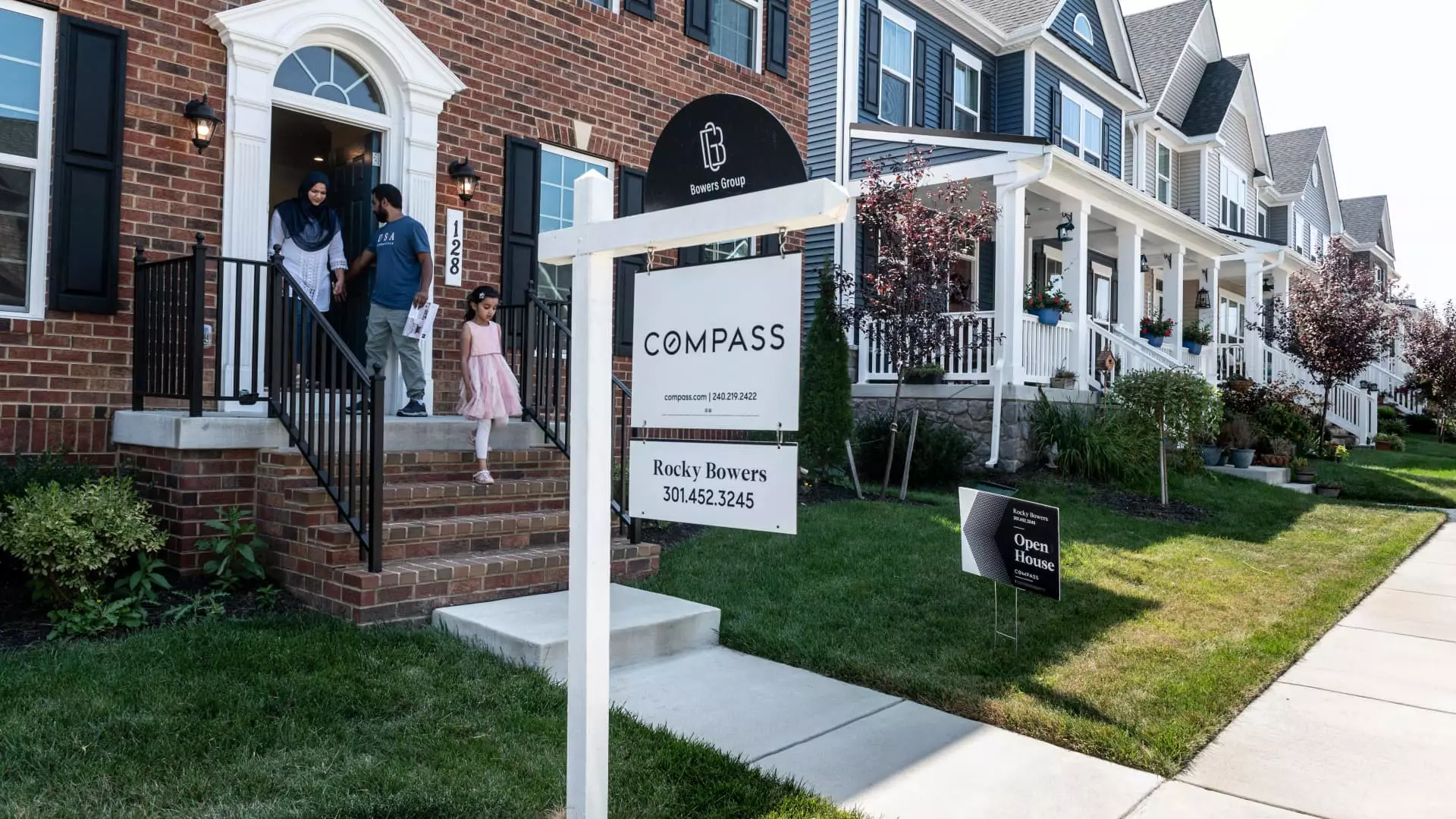The housing market has undergone a significant transformation in recent years, with mortgage rates playing a crucial role in shaping the current landscape. The 30-year mortgage rate, a popular option for home buyers seeking financing, has been a key indicator of market trends. While the rate has dipped from its peak of 8% late last year, it still remains significantly higher than the sub-3% rates that were prevalent during the early stages of the pandemic. This surge in mortgage rates has had a direct impact on consumers’ purchasing power, making it more challenging for individuals to afford their dream homes.
In addition to soaring mortgage rates, housing prices have also reached record highs, further complicating the affordability equation for potential homebuyers. The Case-Shiller national home price index, compiled by S&P Dow Jones Indices, has reported unprecedented levels of price appreciation in the housing market. While this may benefit current homeowners by increasing the value of their properties, it poses significant challenges for aspiring buyers. High housing prices have raised concerns among prospective buyers, who fear that they may be entering the market at an unfavorable time.
As mortgage rates and housing prices continue to climb, the overall affordability of homes has plummeted drastically. Various affordability metrics, such as those from the National Association of Realtors and the Atlanta Federal Reserve, have reported significant declines in affordability over the past couple of years. The share of income needed to afford the median home has surpassed the 30% threshold considered the benchmark for affordability, indicating a growing financial burden on homebuyers. Despite some wage growth in recent years, the negative impact of higher rates and prices has outweighed the benefits for the average consumer, exacerbating the affordability crisis.
Although current mortgage rates are relatively high, a negligible proportion of borrowers are locked in at these elevated levels. According to the Federal Housing Finance Agency, nearly 98% of mortgages are below the average rate recorded in the fourth quarter of last year, with a significant portion even three percentage points below this average. This discrepancy can be attributed to the housing market’s behavior during periods of low rates, as well as the rush to refinance when rates were near 3% at the onset of the pandemic. These factors have enabled existing homeowners to capitalize on lower rates and mitigate the impact of the current market conditions.
The housing market is facing a confluence of challenges, including surging mortgage rates, escalating housing prices, and dwindling affordability levels. As consumers grapple with the changing dynamics of the market, it is essential for individuals to be cautious and informed when making decisions about buying or selling properties. The interplay between mortgage rates, housing prices, and affordability underscores the need for a comprehensive understanding of the market trends and a strategic approach to navigating the evolving landscape of real estate.

